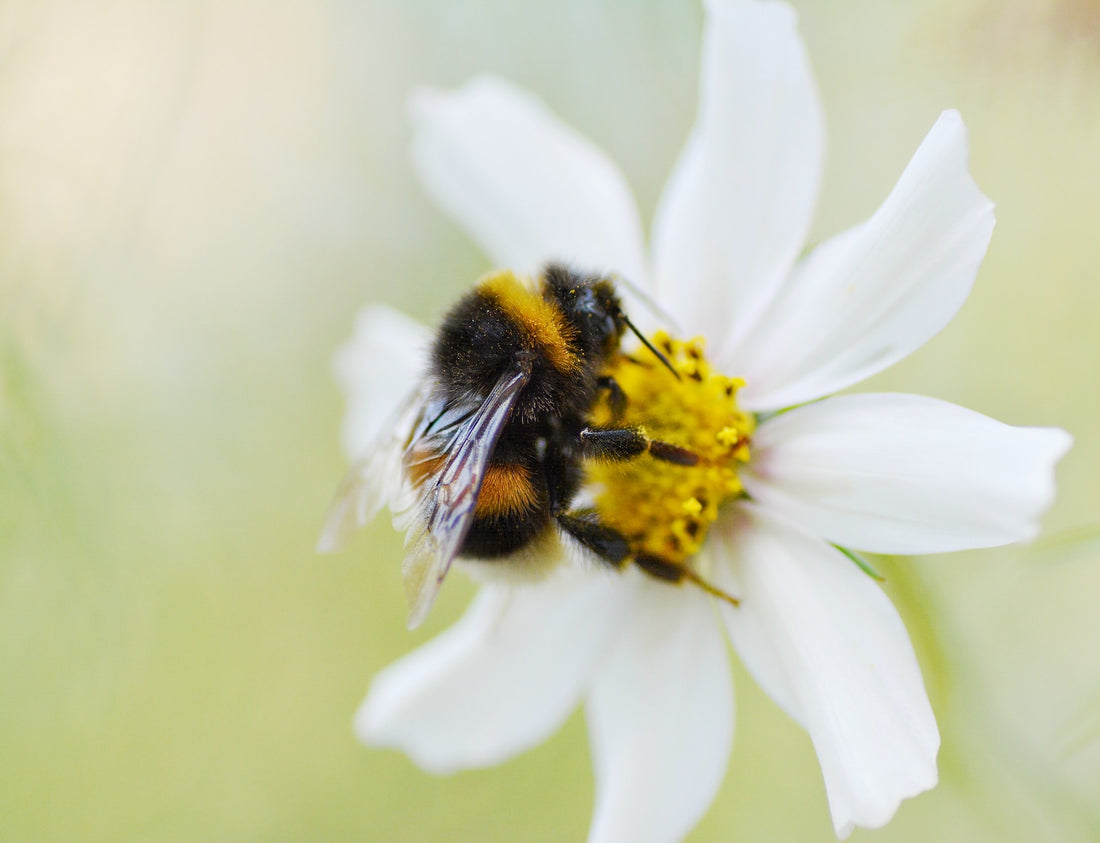There are over 4,000 bee species native to the United States. Yet, we rarely hear about them; instead, all the talk is about honeybees. Honeybees are amazing, but they're not native to North America (European settlers brought them over here), and they take essential food and habitat from native species.
Native bee species pollinate an estimated 80% of all flowering plants. The USDA reports that bees, in general, are responsible for pollinating 75% of all crops in the United States. These little insects are vital to our food system, ecosystem, and earth. And it's up to us to make sure they survive.
Why Bees Are Struggling
Our human egocentricity makes us think we can do things on our own or have better answers than nature. In few cases, is this true! We can grow food without bees, but our overdependence on chemicals, propensity to clear and clean up the land, and lack of awareness have created a dire situation for these essential little creatures.
Habitat loss and fragmentation, along with the use of pesticides, are the key factors of bee population decline. Honeybees are facing colony collapse disorder, but this, thankfully, has not affected native bee species.
How To Help Native Bees
As you can imagine, with over 4,000 bee species in the U.S. alone, there is no one method to help all the bees. Their needs vary quite a bit between species – some are ground dwellers, some build nests in trees, and they all have their preferred flower and plant species.
There are ways to help, though, that are easy and can make a huge impact. Bees, like most other animals and insects, have some basic needs.
Water – All animals need access to water. Bees like shallow troughs with a ledge that they can sit on to sip water. They do not land or sit in the water like some bugs, so it is crucial that they have a place to sit and can reach the water with their tongues. These shallow dishes for bees (and butterflies) are known as puddlers.
There are many super cute and artistic puddlers online, like this ceramic puddler from Etsy.
Safe Home – Bees want a safe place to lay their eggs and raise their young. For native bees that live in the ground, a section of undisturbed soil is ideal. Other bees like clumps of branches or sticks – again, undisturbed is the key. If you set some spots aside in your yard for the bees, it will be much appreciated.
Food – The diverse nature of bee species requires diverse plant and flower arrays. Plant native species and plant a wide variety. Bees will not thrive in a monoculture, and many will struggle if the only plants around are non-native and, therefore, useless to them. Bees can be quite picky; they've developed specializations for certain plants over millennia. It is hard to change that in a few hundred years just because their typical plants are now gone or seriously reduced.
Learn about selecting plants for native bees and other pollinators in your area with these amazing regional guides.
Stop Using Chemicals – This is really one of the most critical points for helping bees. They have no protection against pesticides, and pesticide use kills them in vast numbers. There are other ways to keep pesky insects out of the garden than using pesticides. And there are ways to use pesticides more responsibly.



